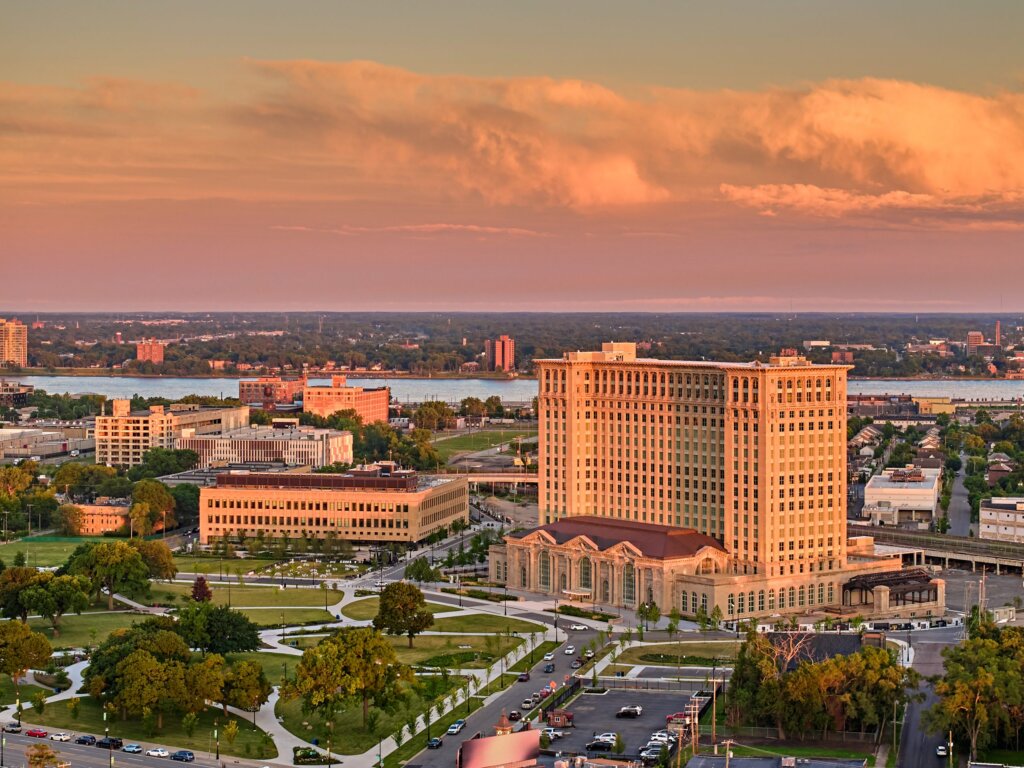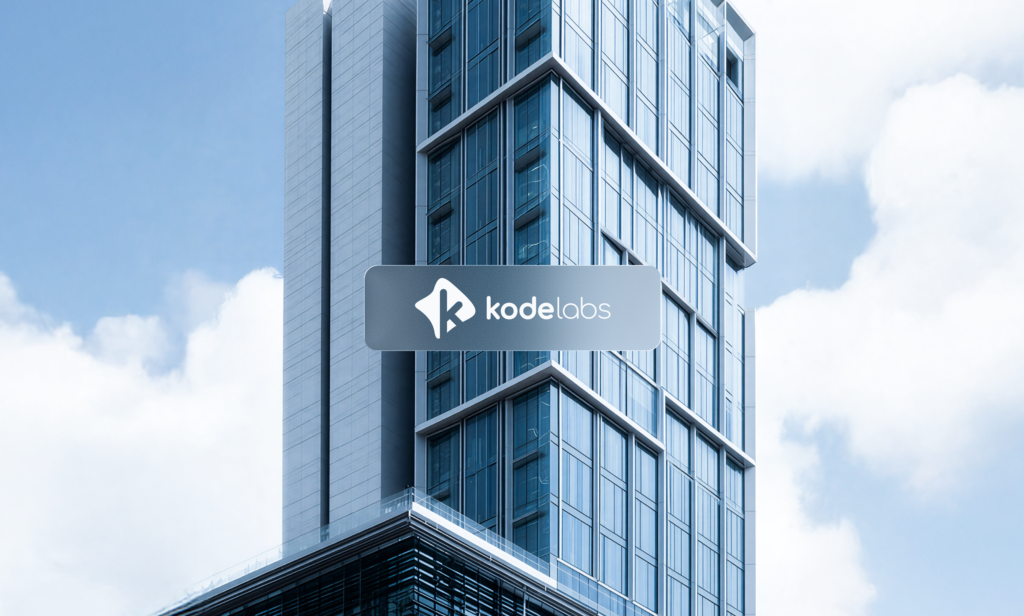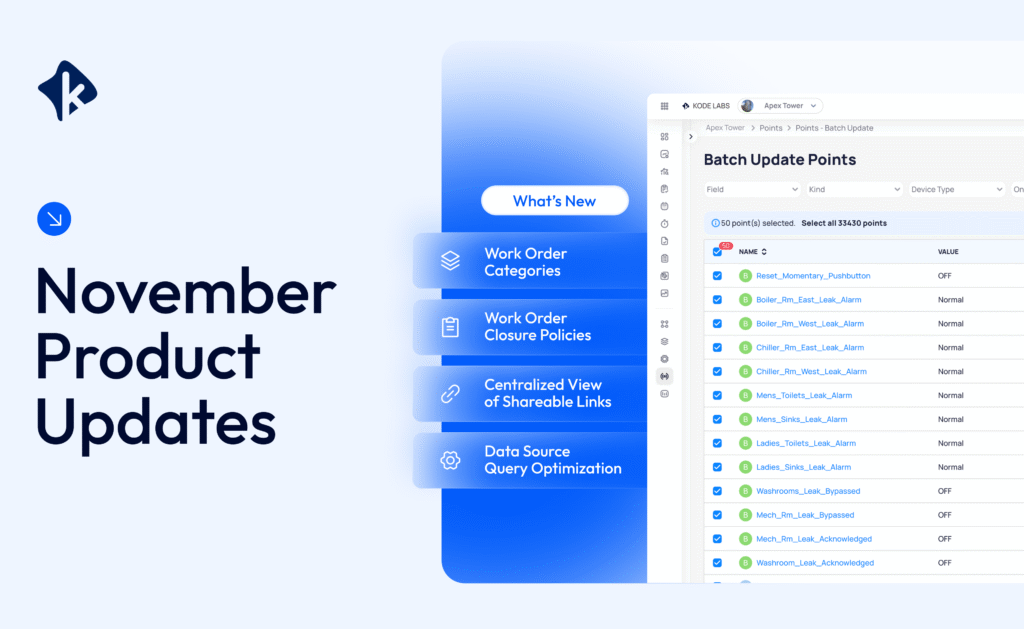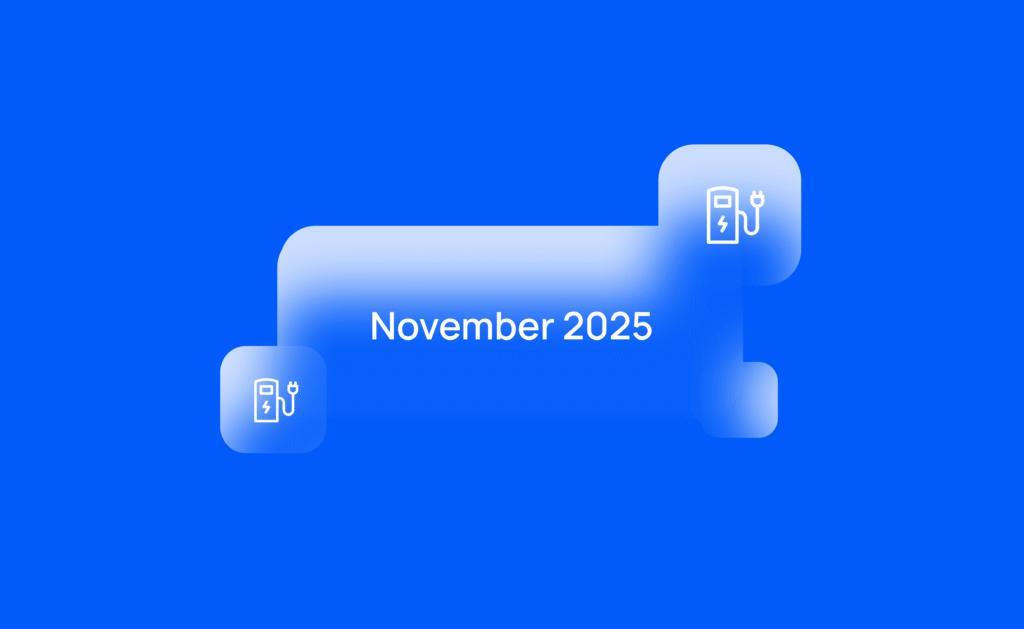By Edi Demaj
On this page
Sign up to our newsletter
Subscribe to receive the latest blog posts to your inbox every week.
By subscribing you agree to with our Privacy Policy.
Downtown Detroit’s resurgence over the past decade is one of the most compelling urban turnarounds in America. Detroit is pioneering future smart buildings with its central business district buzzing with new developments and national attention. The 2024 NFL Draft brought 775,000 fans downtown—just one visual reminder that Detroit is back.
But this revival isn’t just about new buildings and marquee events. It’s about rethinking how those buildings operate. The city’s story is rooted in reinvention: leveraging its historic architecture, its legacy of grit, and a willingness to embrace technology to create a modern urban blueprint.
Historic Landmarks, High-Tech Makeovers
Some of Detroit’s most iconic structures have become flagships for this transformation. The 1926 Book Tower, formerly a symbol of abandonment, reopened in 2023 after a meticulous restoration. While its Renaissance-style exterior was preserved, the interior now runs on a smart operating system—KODE OS—that unifies HVAC, lighting, and other key systems. It’s a 1920s building with a 2020s brain, allowing operators to manage everything in real time.
Meanwhile, Hudson’s Detroit—a 49-story mixed-use development and future home of General Motors’ headquarters—was designed with smart tech from the start. Integrated from the ground up with the same platform powering Book Tower, it connects elevators, climate control, and energy systems into a centralized interface. Bedrock, Detroit’s largest real estate owner and developer, now requires this level of technology in all of its buildings.
Michigan Central, built in 1913 as Detroit’s grand train station, was abandoned for three decades and has also undergone a similarly radical shift. Thanks to a $950 million investment by Ford Motor Co., the Beaux-Arts building is an innovation hub outfitted with adaptive building systems, sensors, and Wi-Fi infrastructure. Ford’s engineering teams stepped into one of the most intelligent workspaces in the country, embedded within a historic landmark. It reopened with great fanfare in June 2024.

Laying a Digital Foundation: Fiber Internet
None of these smart buildings would function without the digital foundation. Back in 2014, my cofounders and I launched Rocket Fiber to fix what was missing in Detroit: world-class internet infrastructure. We built a next-gen, high-speed network from the ground up, connecting downtown with the kind of bandwidth you’d expect in a top-tier tech hub.
This wasn’t just about faster internet. Rocket Fiber was founded in Detroit, built in Detroit, and backed by Detroit – specifically Dan Gilbert and the broader effort to reinvent the city from the inside out. It wasn’t just about renovating buildings. It was about proving Detroit was serious about leading, not following. This was foundational work meant to leapfrog the city years ahead, and it laid the groundwork for everything from smart buildings to a smart city.
Smart Buildings at Scale: A New Operational Model
Modernizing one building can be difficult. Modernizing an entire portfolio is a revolution. When Bedrock began restoring and renovating over 100 buildings downtown, it faced a challenge: each building had unique systems and controls. Our team at KODE Labs recognized this complexity and built KODE OS as a unified solution. Today, all of Bedrock’s buildings feed data into a centralized smart buildings command center, where operators monitor systems, adjust setpoints, and respond to issues—remotely, in real time.
This centralized approach allows Bedrock to manage more buildings more efficiently, without sacrificing comfort or responsiveness. Instead of dealing with isolated systems, property managers now interact with a unified interface, backed by predictive analytics, fault detection, and real-time alerts. The result? Faster issue resolution, optimized energy use, and a consistent tenant experience across the portfolio.
Detroit’s use of centralized smart building operations is now being replicated in other national and global cities. Strategies developed here are shaping national conversations around operational efficiency, sustainability, and scalable urban management.
Building an Urban Tech Ecosystem
Smart buildings don’t thrive in isolation; they need a supportive ecosystem. That’s why the Urban Tech Xchange (UTX), launched in Detroit in 2023, is so important. A collaboration between NextEnergy, Bedrock, Bosch, Cisco, KODE Labs, and civic leaders, UTX is a real-world lab for testing urban technologies. Located in downtown Detroit’s Central Business District, UTX features the latest infrastructure and is directly integrated with Bedrock’s broader real estate portfolio.
Startups and enterprise partners alike can test their technologies within UTX and plug directly into anonymized building performance data through open APIs. It’s a proving ground that accelerates innovation by embedding it within the built environment.
UTX joins a growing network of innovation hubs across Detroit—from Newlab at Michigan Central in Corktown to TechTown in Midtown Detroit and the Detroit Smart Parking Lab. These spaces break down silos and foster collaboration across government, real estate, tech, and automotive industries. That spirit of collaboration—born from necessity and sustained by shared vision—is one of Detroit’s greatest strengths.
Detroit Pioneering Future Smart Buildings: A Blueprint for Resilient, Smart Cities
Downtown Detroit’s tech revival holds lessons for cities across the country. The first: never underestimate a city with grit. The turnaround was built from within. Led by Dan Gilbert and Mayor Mike Duggan in collaboration with countless longtime Detroit businesses and organizations, individuals, entrepreneurs, developers, civic leaders, and foundations, they came together to imagine something better and build toward it, one fiber strand and smart sensor at a time.
Second, Detroit proves that modernization and preservation aren’t mutually exclusive. Retrofitting historic buildings with smart technology allows cities to retain their character while upgrading their capabilities. From Book Tower to Michigan Central, Detroit shows that historic buildings can be reborn without sacrificing their distinct character.
Finally, Detroit teaches us the value of tech ecosystems. Smart buildings don’t just save energy—they’re nodes in a broader strategy. They rely on broadband access, startup collaboration, strong policy, and data integration. When all of these elements come together, cities can transition from reactive maintenance to proactive, efficient management at scale.
As someone who’s had a front-row seat to Detroit’s transformation working in Detroit commercial real estate since 2011, I believe our city is more than a case study. It’s a beacon for what’s possible when resilience meets innovation. Detroit is pioneering future smart buildings, showing that technology, when paired with a bold vision and a collaborative spirit, can help cities transform and redefine their futures.
And Detroit isn’t done yet.




